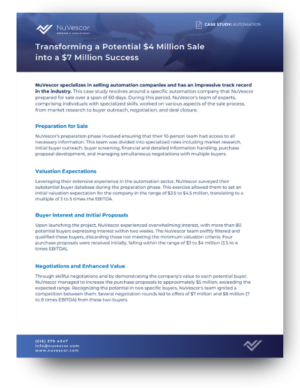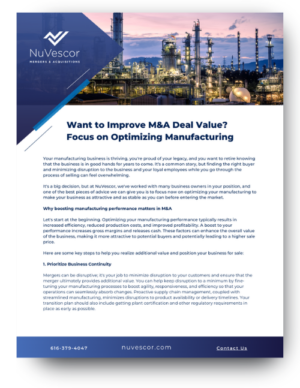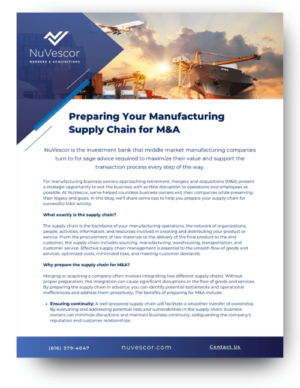
Maximizing M&A Benefits: Strategies and Case Studies for Growth
Maximizing M&A Benefits: Strategies and Case Studies for Growth
The most successful M&A transactions are those that enable multiple synergies and drive increased cash flow for each participating business, surpassing what each could have achieved independently.
The Benefits of M&A (Mergers & Acquisitions)
When two companies merge, the resulting entity can experience significant revenue growth in several ways:
- Diversification of product or service offering. The merged entity can combine its offerings for a wider range of products or services, potentially upselling to existing customers and reaching new ones.
- Cost savings. Eliminating redundant functions or operational inefficiencies leads to reduced expenses.
- Expanded geographic reach. Access to new customers and markets due to a larger footprint.
- New distribution and marketing channels. Opportunities to tap into new market share.
- Enhanced products, services, technology, or branding. Improved offerings that better cater to clients’ needs.
What does that look like in practice? Take a look at two quick case studies that demonstrate how companies can benefit when an M&A deal is handled well:
eBay’s Acquisition of PayPal
By leveraging each other’s customer base, offering complementary services, and enhancing customer convenience, eBay and PayPal created synergies that benefited both companies. PayPal edged out its competitors to become the default company for online payments, and eBay eventually required users to use PayPal for transactions. The result? PayPal increased sales volumes and dominated the market, while eBay benefited from the convenient payment processing option.
National Oilwell and Varco International
National Oilwell was a leading oilfield drilling equipment designer in the early 2000s. In 2005, it acquired 51% of Varco International’s stock. Varco was a leading provider of consumable replacement parts and engineered products. The $2.5 billion deal created the largest oilfield services equipment manufacturer in the U.S.
The acquisition allowed National Oilwell to provide replacement parts and maintenance to its oilfield customers at high margins, securing consistent cash flow. It also expanded National Oilwell’s global reach, provided access to Varco’s valuable intellectual property IP, and reduced competition by consolidating vendors.
Due to the merger, National Oilwell magnified its energy sector presence and has gained significant cross-selling options.
Achieving the Goal
The ultimate goal of any merger is to enhance positioning, reduce competition, realize synergies, and drive growth. For a successful deal, the two businesses must have compatible cultures as well as complementary products and services. The deal also must be viewed through a customer-focused lens to ensure that it aligns with the voice and needs of the customer.
Preparation for a Successful Transaction
Before bringing a company to market, the team at Nuvescor Group works with them to identify suitable buyers who meet the criteria for complementary services and compatible culture and are able to capitalize on the opportunities presented by the deal. This meticulous process often results in a more focused experience and higher valuations for clients.
Contact us to learn more about how we can help guide you through your buying or selling journey.
This article was originally published on March 21, 2018 and newly updated on November 7, 2023.











Recent Comments